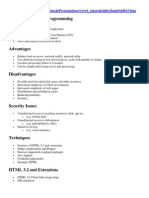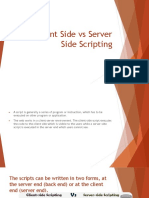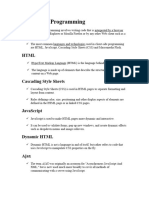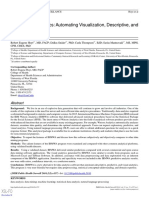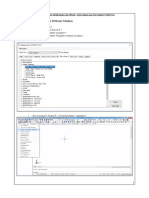0% found this document useful (0 votes)
99 views16 pagesCs and Ss Script
Server-side scripting runs on the web server and generates dynamic web page content before sending to browsers. Client-side scripting runs in browsers and makes web pages interactive. Common server-side languages are PHP, ASP, JSP, and Python. JavaScript is the main client-side language. Server-side scripting is generally more secure but client-side allows for more interactivity. Developers must test scripts on various browsers due to differences in support.
Uploaded by
JayaprasannaCopyright
© © All Rights Reserved
We take content rights seriously. If you suspect this is your content, claim it here.
Available Formats
Download as PPT, PDF, TXT or read online on Scribd
0% found this document useful (0 votes)
99 views16 pagesCs and Ss Script
Server-side scripting runs on the web server and generates dynamic web page content before sending to browsers. Client-side scripting runs in browsers and makes web pages interactive. Common server-side languages are PHP, ASP, JSP, and Python. JavaScript is the main client-side language. Server-side scripting is generally more secure but client-side allows for more interactivity. Developers must test scripts on various browsers due to differences in support.
Uploaded by
JayaprasannaCopyright
© © All Rights Reserved
We take content rights seriously. If you suspect this is your content, claim it here.
Available Formats
Download as PPT, PDF, TXT or read online on Scribd
/ 16


















